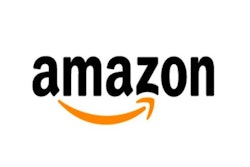
For most retailers and manufacturers, the reverse supply chain used to be just an afterthought, if not an annoying cost driver. Now, businesses are realizing that effective reverse supply chain management represents an opportunity to improve operations and increase company profits.
These four trends are helping drive innovation in reverse supply logistics.
1. In-region Support to Mitigate Tariff & Duty Costs
A year ago, contingency planning in case of a possible trade war wasn't high on anyone's priority list. Logistics professionals were far more concerned about the strikes, storms and fires affecting supply chains. Now, tariffs are making daily headlines and increasing financial risk for companies worldwide.
Many companies are expanding their supplier lists to include items produced in countries not affected by tariffs. Shipments can then be routed based on each country's tariff and trade situation. However, more vendors in more countries may increase trade compliance and logistics costs. Worst case scenario is that procurement changes could mean just trading one cost increase for another. A third-party logistics partner experienced in compliance can offer advice and assistance to companies considering new vendors.
2. Visibility and Real-Time Analytics
There's no way to effectively manage a global supply chain and meet customer expectations without real-time visibility and analytics tools. Visibility and traceability is even a regulatory requirement in some industries like the medical device sector. Integrated supply chain management systems also help companies meet their promised SLA service and uptime requirements.
The best systems offer accountability, instant scalability and complete visibility. They make it possible to track inventory and every step of the service/repair process from start to finish. Data analysis can highlight issues with manufacturing, tolerances or packaging so companies can correct them before products fail in the field.
If you don't have visibility, data and high quality your company will be left behind.
3. The Sharing Economy & Crowd-sourced Logistics
The U.S. and Europe both have a massive shortage of truck drivers. Even if there are enough drivers and trucks to haul freight, transportation infrastructure and congestion affect supply chains. The U.S. has five cities in the global top 10 most congested cities— but the problem is worldwide.
Many companies respond by tapping into the shared economy and crowd-sourced logistics (CSL). The CSL model operates much like a B2B version of Uber. Shippers use a mobile or computer app to contact independent contractors who provide transportation using a vehicle owned personally or by a business that rents out extra capacity.
Something similar is happening with warehouses. There are start-up companies that match warehouses with excess capacity with businesses needing temporary warehouse storage, giving companies the ability to stock small quantities of components in remote areas.
CSL has the potential to help facilitate last-mile logistics and decrease costs. It allows companies to scale up in times of high transportation demand and serve customers in distributed locations without investing in large warehouses.
4. Managing Complexity with Blockchain
Originally developed for Bitcoin, blockchain technology has the potential to become the universal supply chain operating system. It operates like a distributed, digital ledger where every entity involved in the supply chain has complete visibility at all times. Records held in blockchains are tamper-proof: Users can see everything, but can't modify or delete information. Thus, there's an audit trail for every action.
Blockchain can increase transparency and data reliability in many areas:
- Supplier payments
- Product traceability
- Contract bids
- Service and repair
- Information sharing
- Tracking products with bar codes, RFID tags, etc.
It's possible to seamlessly transition to blockchain because it doesn't replace current systems, only augments them by organizing all the information into one place. It can be built into a web-based interface that gives visibility into the entire system.
It's time for businesses to sharpen their focus on reverse supply chain management. Competitors are already using new technologies and systems to enhance the profit potential of service and repair functions. Companies adept at using technology and willing to try new platforms are better prepared to meet the challenges of global reverse supply chain logistics.




![Pros To Know 2026 [color]](https://img.sdcexec.com/mindful/acbm/workspaces/default/uploads/2025/08/prostoknow-2026-color.mduFvhpgMk.png?auto=format%2Ccompress&bg=fff&fill-color=fff&fit=fill&h=100&q=70&w=100)







![Pros To Know 2026 [color]](https://img.sdcexec.com/mindful/acbm/workspaces/default/uploads/2025/08/prostoknow-2026-color.mduFvhpgMk.png?ar=16%3A9&auto=format%2Ccompress&bg=fff&fill-color=fff&fit=fill&h=135&q=70&w=240)







